Day 3 Session Notes–Fair and Effective Designer Evaluation
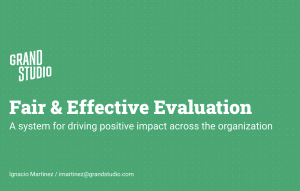
— Thank you and appreciate being here
— Associate director at digital design agency with 18 designers and I take on operational duties
- Duties helped with evaluating career growth for designers in company and collaborative effort for people in company
— Our system for positive impact is across org
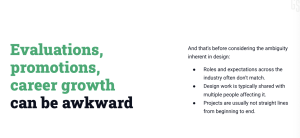
— Evaluations can be awkward at times and nebulous
- Even with ambiguity of design industry, and lead designer means different things across places
- Solutions come from process that loops back in forth
- Collaborative nature of design further muddies the waters
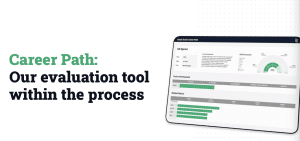
— Here’s a tool we developed for evaluation process to make it more fair and effective for behaviors that lead to positive impact
- Helped with retention, staffing, and mentoring
- Roadmap for growth at studio
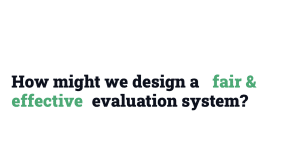
— Imagine you’ve had similar challenges in your organization
- Want to do right by company and designers regarding career growth
— Usually solving problems for us, so let’s design our belief systems and tools that work for us
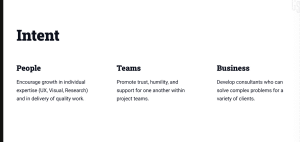
— System to encourage people to develop expertise, deliver growth across teams, and create consultants to solve problems across projects and clients
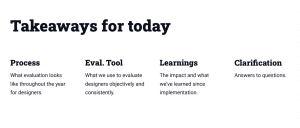
— I’ll share takeaways and how to improve
- Framework regardless of size and whatever is done, the goal is to create a positive impact on people, teams, and businesses
- A demo of the tool
- Overview of process
- Discussing learnings and implementation
— Time for questions
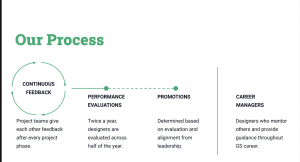
— Overview of how evaluation works
- Continuous feedback and evaluations twice a year and promotion to determine evaluated and alignment from leadership
- Career Managers to mentor and advocate on behalf for staffing and promotions
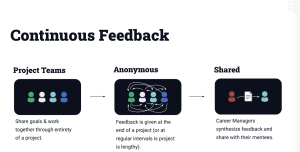
— Continuous Feedback is a key element:
- Teams and individuals share goals at beginning of project and work at each step aof way
- UXD and UXR support each other
- Anonymous feedback via survey and prompts giving feedback to career managers and share with mentees
- Con: Quality can vary across individuals— so need to outline helpful feedback. Time to do this, along with everything else
- Pros: Close collaborators in timely fashion, and goals restrain feedback provided to what’s important
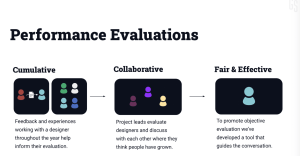
— Performance Evaluation
- Do every six months and any lead who worked with designer will make evaluation
- Build career guides to outline and facilitate conversation for what to do
- Outline how reviews work across studio and across roles
- Minimizing creative interpretation along career path to make process as fair as possible
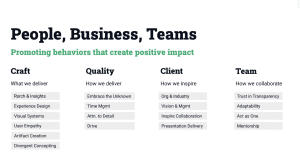
— Career path is main thing that guides impacts
- Traits determined for designers to focus on, and define success and promote company values to defining how we work externally and internally through our client and team
— Designers can grow as consultants regardless of project
- We want generalists, not specialists
— Skills to promote behaviors across people, teams, and business
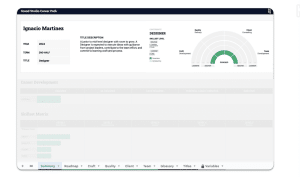
— So what does this look like in practice?
- Let’s look at tool and find out
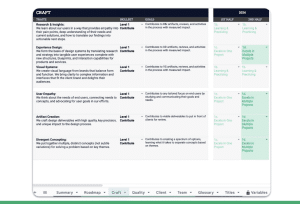
— Can see all categories within skillset matrix and accumulation of progression and that person is halfway through track on designer level role
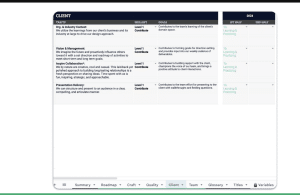
— Let’s view craft tab and design areas to focus on at the studio from research to design
- We are now filling out content from second half
— We think about a project, i.e. how did Ignacio perform with supervision, and growth area in specific trait
- Answer question of excelling, staying the same, or not meeting expectations
— Means completing track for designer level role
— Other include
- How designers connect decisions to end-users
- Are designers iterating multiple concepts
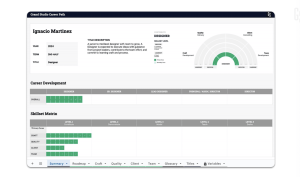
— Returning to summary tab, you can show how change in one tab translated across different goals
- Certain skills are weighted for categories for each role, and designer level role expected to contribute to design work
- Client and team focused more on design leads as that is the main focus and items
- Like prioritizing items and pushing project forward
— Skillset matrix, see all categories to full up, and career dev did change, and part to show i ready for promotion
- Not just one review, but every project-lead, career manager, and team-leadership
— Used blank Google Sheet to implement structure, and know how model works under the hood, so can make adjustments and changes as needed
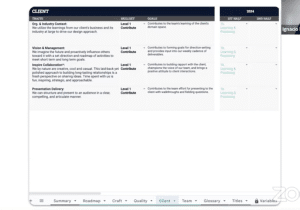
— Example of evaluation levels, and marking down certain categories, and how you work across teams and adapting for project as a unit
- Designer should reference this
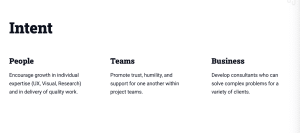
— So what has been the impact? We have a new system to influence behavior across teams
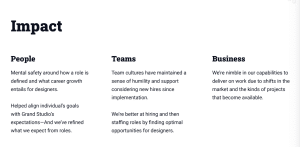
— People assured by presence of plans
— Team culture has still continued despite client demands
— Business can work with variety of clients thanks to diverse skillset of designers
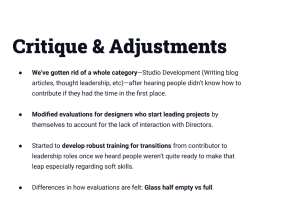
— Not entirely smooth
- Have to remove whole categories of development, and often consolidating based on business needs
— Modify evaluations for designers leading projects
Develop robust training from IC to leadership role, and making people comfortable with transition— beyond initial perception
— Perceptions can vary from one person to another, and don’t expect people to excel in all traits
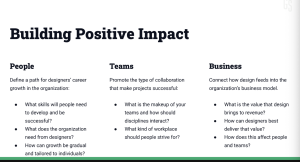
— What does this mean outside the studio?
— Roadmap of growth for designers, and ask for teams what company values were will make teams successful
— What is value design brings for business and what traits does organization need to provide impact
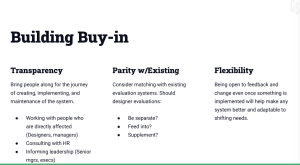
— Something about instilling confidence by having transparency, creation and maintenance
- Design teams to have parity with existing systems that are out there
— Being open to flexibility by people using the systems
- How to know if system implemented working
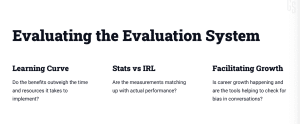
— Look for learning curve, and risk of too much effort o implement
— Tool is abstraction of actual performance, so compare stats across designers
— Facilitated worthwhile conversation for career growth
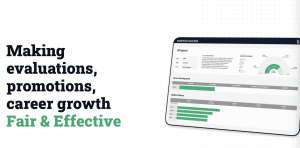
— Conversations are structured and mean to function as being fair and effective
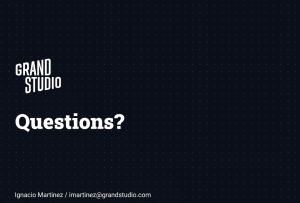
— Thank you. Any questions
Q&A
- How to manage expectations when talent expects a promotion?
- Career Manager and mentees have that conversation, and get them opportunities where they will have most growth and research project and also mentorship
- Not specific to evaluations, but deal with phenomena of assessment changing based on criteria that’s used?
- Great question, and we try to keep the definitions consistent through a project when we can
- Impetus behind custom framework?
- No formal evaluations were defined, and categories were there, but had open interpretation and nothing robust existed
- Expectations for traits and each of levels
- Sense of transparency brought comfort to designers at studio and brought sense of what to do
- How to manage non-linear careers and lateral moves through system?
- Way we fill out career path is more linear and expectations are different and still trying to figure out
- Retooling evaluations for this
- Someone might not go all the way there so trying to figure it out
- Who contributes to client tab? Do you survey client?
- How much of client time to take and overall studio and individual
- Retros and what went well and what didn’t — all evaluators
- How does this support adjustment in role like a disability?
- Haven’t run into issue, but something to work on

